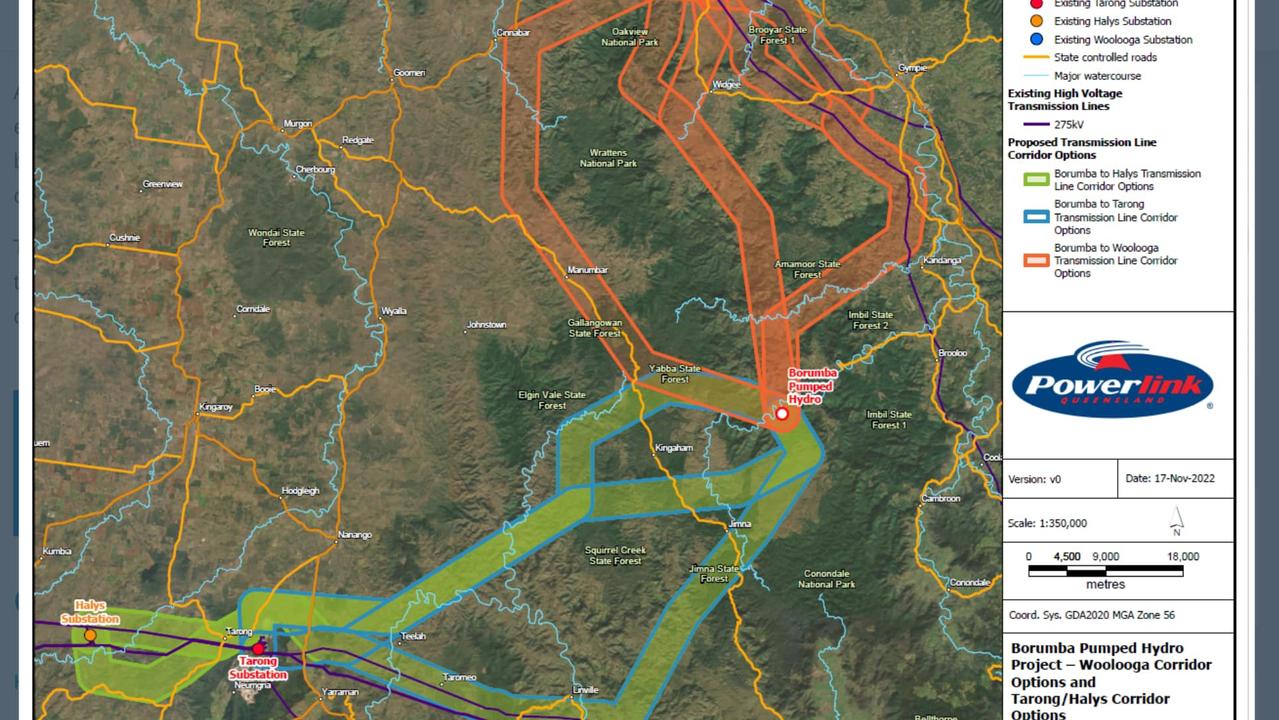Property Rights Australia voice their concerns over the Borumba Hydro Dam Project
A property group has thrown support behind landholders who could have transmission lines running through their backyards, saying they shouldn’t have to bear the brunt of a climate policy.

Gympie
Don't miss out on the headlines from Gympie. Followed categories will be added to My News.
A peak rural property rights group has thrown its support behind residents concerned about high-voltage lines going through their properties for the Borumba Pumped Hydro Dam Project.
Gympie and South Burnett residents have raised concern about the government-owned Powerlink’s proposed route for transmission line corridors to connect the pumped hydro dam to substations in the southwest to Tarong and Halys and north to Woolooga.
Property Rights Australia president Rob Atkinson has raised questions around fair compensation for landholders and called for any transmission lines to follow existing corridors or be built on government-owned land.
“Historically rural landholders have borne the brunt of Australia‘s climate change policies,” Mr Atkinson said.
Mr Atkinson was wary about the timing of the drafts, released in November 2022, and the concern it caused people “just prior to Christmas”.

“They get the news that the whole world’s going to turn upside down, they’re (going to) run big transmission lines over the top of your property,” he said
“We believe that wherever possible transmission lines need to stay on crown land, whether that’s national parks or forestry and wherever possible.
“They should follow existing transmission lines because those people have already learned to live with them.
“Anyone affected by government decisions like this needs to be fairly compensated.”
Powerlink plans to acquire 70-metre wide easements to connect the hydro dam to the existing electricity grid.
“Our strong preference is to reach a negotiated outcome with landholders regarding the presences of the easement, location of the transmission line within an easement and associated compensation arrangements,” a Powerlink spokesperson said.
To date Powerlink has not released any decisions regarding the amount of compensation or the location of the transmission lines or towers.

The corridor options Powerlink are currently seeking feedback on are for overhead transmission lines.
In response to whether underground lines were possible, a statement from Powerlink said that undergrounding would be considered where “feasible”.
“This would need to be considered alongside project impacts from an environmental, land use, technical, operational and economic perspective,” the spokesperson said.
Mr Atkinson said new technology around underground lines could carry much heavier loads than overhead transmission lines.
“We need to be using all the modern technology we can get our hands on,” he said.
“If there‘s something out there that is proven to work, even at a much greater cost that needs to be considered.”
Mr Atkinson also raised concern for the health effects of overhead lines.
“A lot of people with domestic animals, particularly horses, are very concerned what effect transmission lines have on those animals,” he said.

In response to the health effects with electric and magnetic fields, a Powerlink spokesperson said while there is no scientific proven causal link between electric and magnetic fields and adverse human health, “Powerlink follows a ‘prudent avoidance’ approach in designing and locating our network”.
“At about 200m from the line, the EMF from a transmission line is so small it cannot be differentiated from magnetic fields from other closer sources found in and about the home and workplace,” a spokesperson said.
The 2000 megawatt pumped hydro plant has been flagged as a crucial part of the state government‘s renewable energy future.
Powerlink is currently seeking input on the corridor options. Submissions will close on Friday, February 24, 2023.
More Coverage
Originally published as Property Rights Australia voice their concerns over the Borumba Hydro Dam Project








